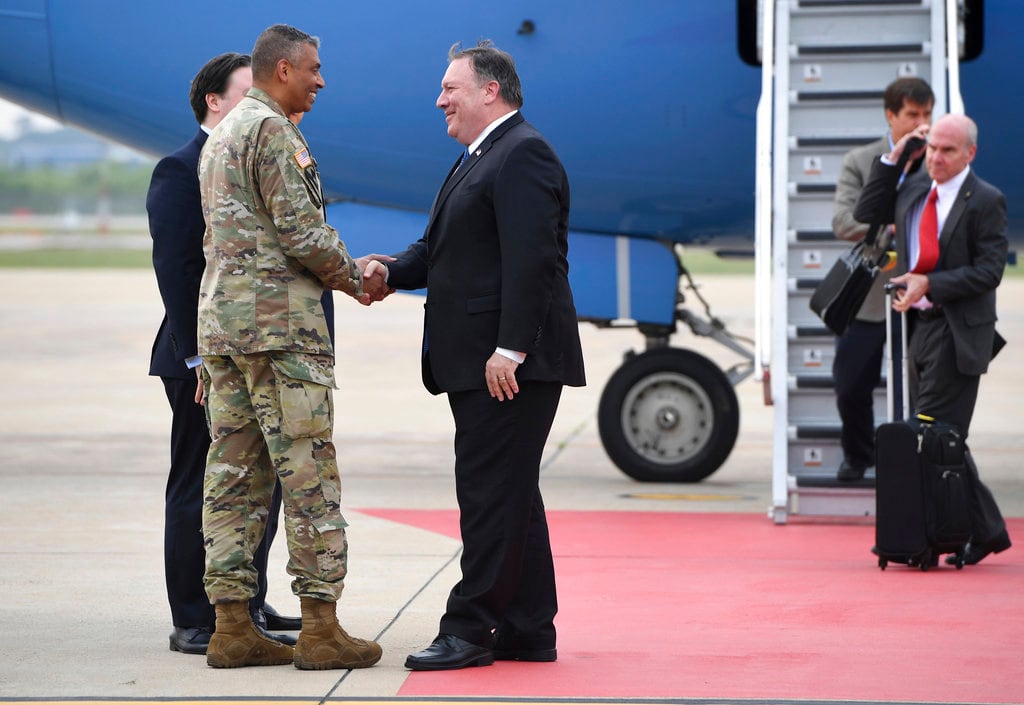WASHINGTON — President Donald Trump stretched credulity at home and abroad Wednesday by declaring there is “no longer a Nuclear Threat from North Korea” after his summit with Kim Jong Un that reduced tensions but produced no details on how or when Pyongyang might disarm.
Tempering Trump’s very upbeat assessment, his top diplomat, Mike Pompeo, cautioned that the U.S. would resume “war games” with close ally South Korea if the North stops negotiating in good faith. The president had announced a halt in the drills after his meeting with Kim on Tuesday.
RELATED
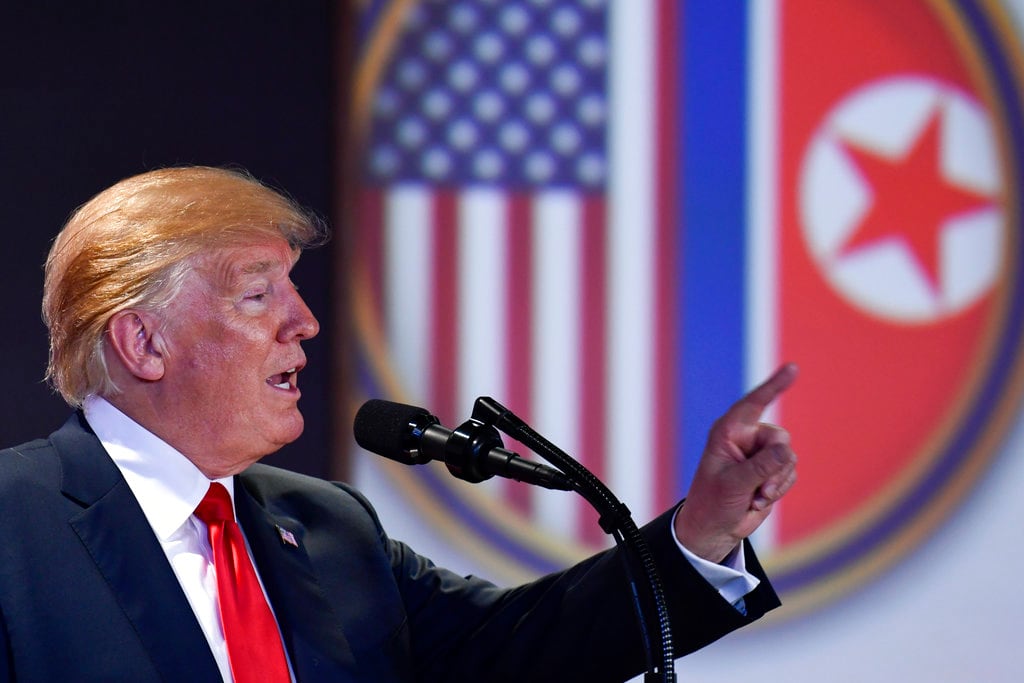
The summit in Singapore marked a sea change from last fall, when North Korea was conducting nuclear and missile tests, and Trump and Kim were trading threats and insults that stoked fears of war. Kim is now promising to work toward a denuclearized Korean Peninsula.
But the details of what is sure to be a complex and contentious process have yet to be settled. That didn’t stop the president from talking up the outcome of what was the first meeting between a U.S. and North Korean leader in six decades of hostility. The Korean War ended in 1953 without a peace treaty, leaving the two sides in a technical state of war.
“Just landed - a long trip, but everybody can now feel much safer than the day I took office,” Trump tweeted early Wednesday. “There is no longer a Nuclear Threat from North Korea. Meeting with Kim Jong Un was an interesting and very positive experience. North Korea has great potential for the future!”

Pompeo, who flew to Seoul to brief South Korean leaders on the summit, said the U.S. wants North Korea to take “major” nuclear disarmament steps within the next two years — before the end of Trump’s first term in 2021. He said the North Korean leader understands that “there will be in-depth verification” in any deal with the U.S.
“We have big teams ready to go,” including experts from the U.S. and other partners around the world, Pompeo told reporters. “We’re prepared to execute this once we’re in a position that we can actually get to a place where we can do it.”
The secretary of state said the brief, four-point joint statement that emerged from the summit did not encapsulate all the progress the U.S. and North Korea had made. He said negotiations would recommence “in the next week or so.”
RELATED
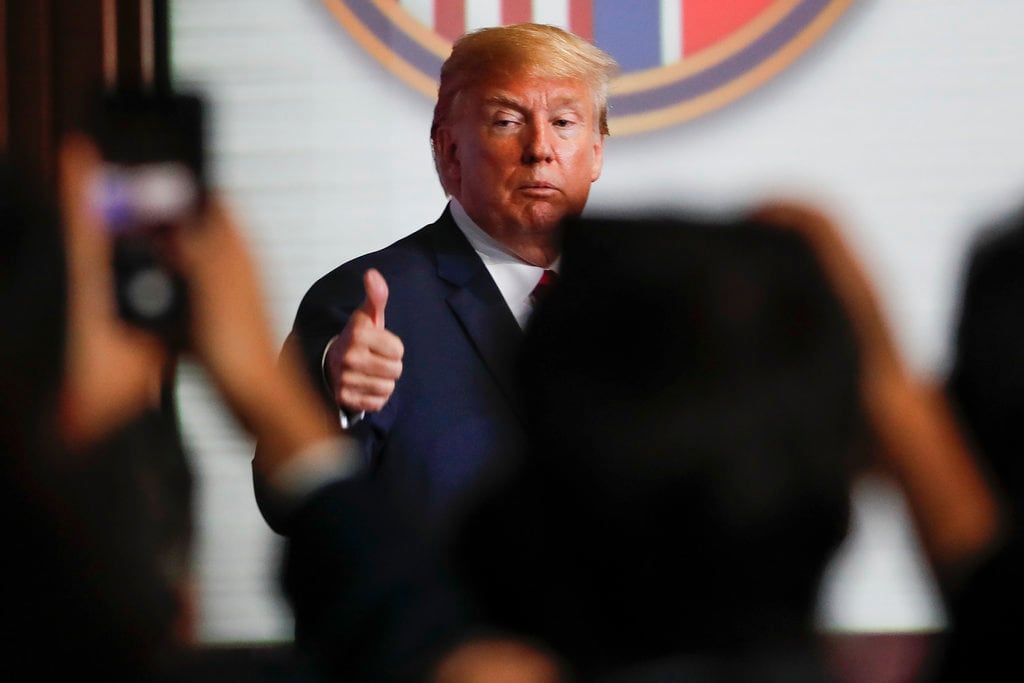
While Trump was facing questions at home and among allies about whether he gave away too much in return for too little at the summit, North Korean state media heralded claims of a victorious meeting with the U.S. president. Photos of Kim standing side-by-side with Trump on the world stage were splashed across newspapers.
Trump’s own chest-thumping tweet seemed reminiscent of the “Mission Accomplished” banner flown behind President George W. Bush in 2003 when he spoke aboard a Navy ship following the U.S. invasion of Iraq. The words came back to haunt the administration, as the war dragged on throughout Bush’s presidency.
Trump’s claim that North Korea no longer poses a nuclear threat is questionable considering Pyongyang’s significant weapons arsenal.
Independent experts say the North could have enough fissile material for between about a dozen and 60 nuclear bombs. Last year it tested long-range missiles that could reach the U.S. mainland, although it remains unclear if it has mastered the technology to deliver a nuclear warhead that could re-enter the atmosphere and hit its target.
“Before taking office people were assuming that we were going to War with North Korea,” Trump tweeted. “President (Barack) Obama said that North Korea was our biggest and most dangerous problem. No longer - sleep well tonight!”
RELATED
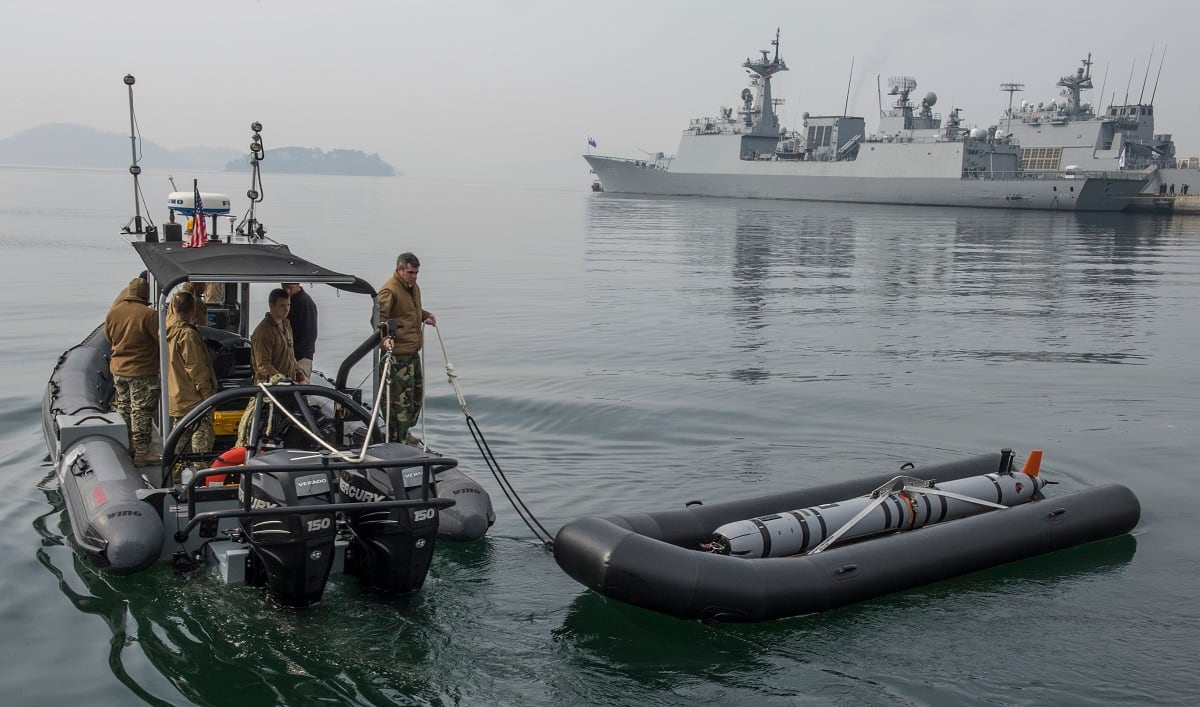
Actually, concerns about North Korean missiles and nuclear weapons reached a peak last year, during Trump’s first year in office, as the North conducted more tests and Trump and Kim trained ever more fiery rhetoric on each other.
When asked Wednesday whether Trump was jumping the gun by declaring victory, White House counselor Kellyanne Conway told reporters: “This president wants North Korea to completely denuclearize so obviously that has to be complete, verifiable and irreversible.
Freezing the regular military exercises with South Korea is a major concession to North Korea that has long claimed the drills were invasion preparations. Trump’s announcement appeared to catch the Pentagon and officials in Seoul off guard, and some South Koreans were alarmed. Trump cast the decision as a cost-saving measure, but also called the exercises “inappropriate” while talks continue.
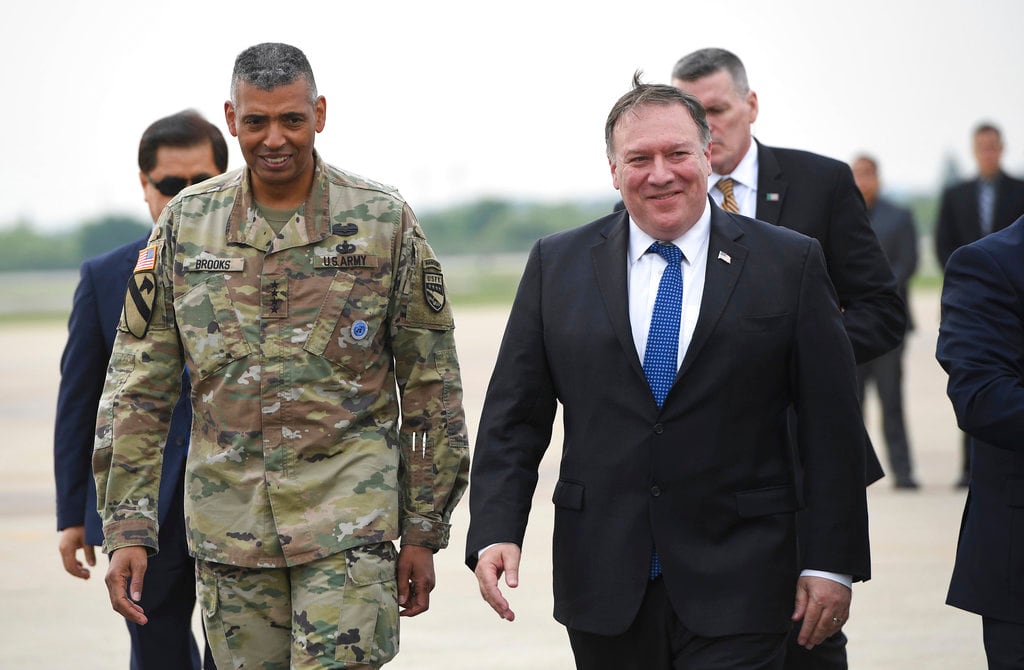
Pompeo said he was there when Trump talked about it with Kim, and the president “made very clear” that the condition for the freeze was that good-faith talks be ongoing. He told reporters that if the U.S. concludes they no longer are, the freeze “will no longer be in effect.”
“He was unambiguous about that and how he communicated it, both at the press conference but certainly when he was with Chairman Kim as well,” Pompeo said.
In North Korea on Wednesday, Pyongyang’s first reports on the summit stressed to the nation’s people that Trump had agreed to Kim’s demand to halt the military exercises and suggested that Trump also said he would lift sanctions as negations progressed.
“President Trump appreciated that an atmosphere of peace and stability was created on the Korean Peninsula and in the region, although distressed with the extreme danger of armed clash only a few months ago, thanks to the proactive peace-loving measures taken by the respected Supreme Leader from the outset of this year,” the North’s state-run Korean Central News Agency said in a summary of the meeting.
RELATED
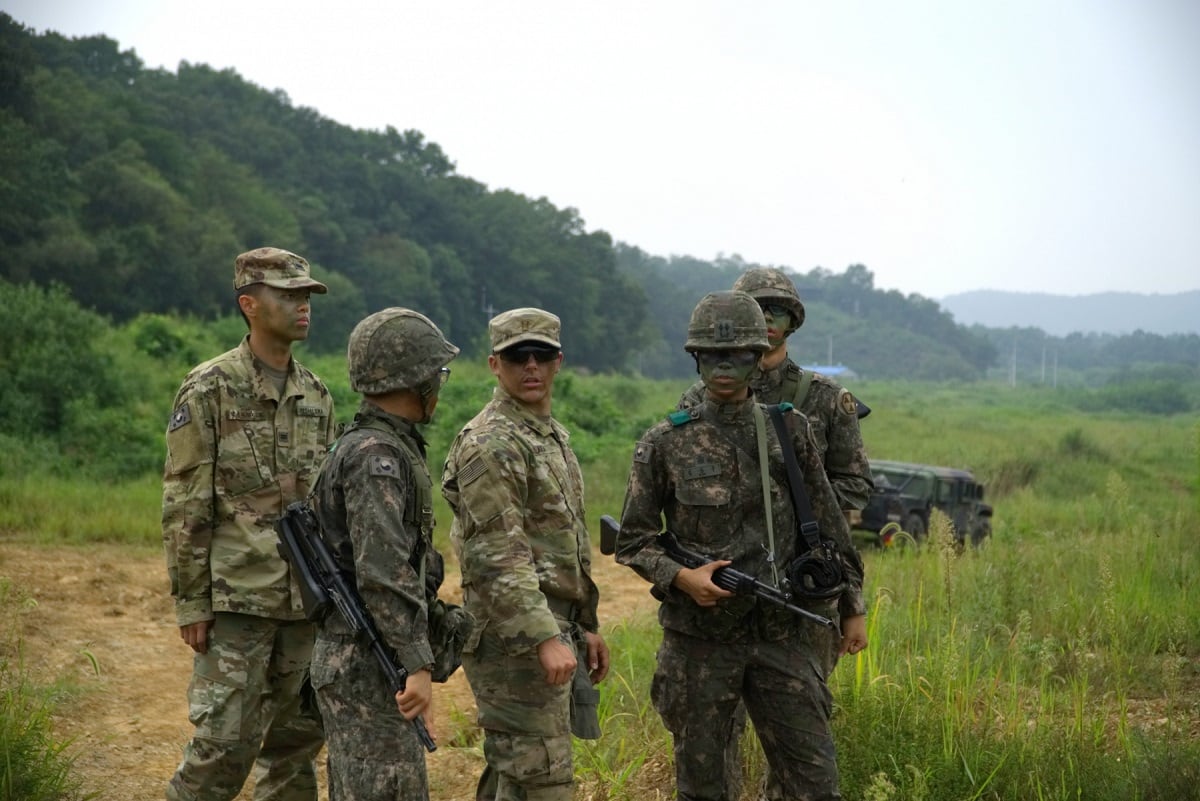
Pompeo, after landing in South Korea, met for nearly an hour with Gen. Vincent Brooks, commander of U.S. Forces Korea. The secretary of state is to meet President Moon Jae-in on Thursday morning to discuss the summit. Japanese Foreign Minister Taro Kono also headed to Seoul and was to meet with Pompeo and his South Korean counterpart. Pompeo, the former CIA director, then plans to fly to Beijing to update the Chinese government.
In Japan, the prospect of canceled U.S.-South Korean drills was met with concern.
“The U.S.-South Korea joint exercises and U.S. forces in South Korea play significant roles for the security in East Asia,” Defense Minister Itsunori Onodera told reporters Wednesday. He said he planned to continue sharing the view with Washington and Seoul.
The U.S. has stationed combat troops in South Korea since the end of the Korean War and has used them in a variety of drills. The next scheduled major exercise, involving tens of thousands of troops, normally would be held in August.
Lederman reported from Seoul, South Korea. Associated Press writers Anne Flaherty in Washington; Foster Klug and Adam Schrek in Singapore; Eric Talmadge in Pyongyang, North Korea; Kim Tong-hyung in Seoul and Mari Yamaguchi in Tokyo contributed.
